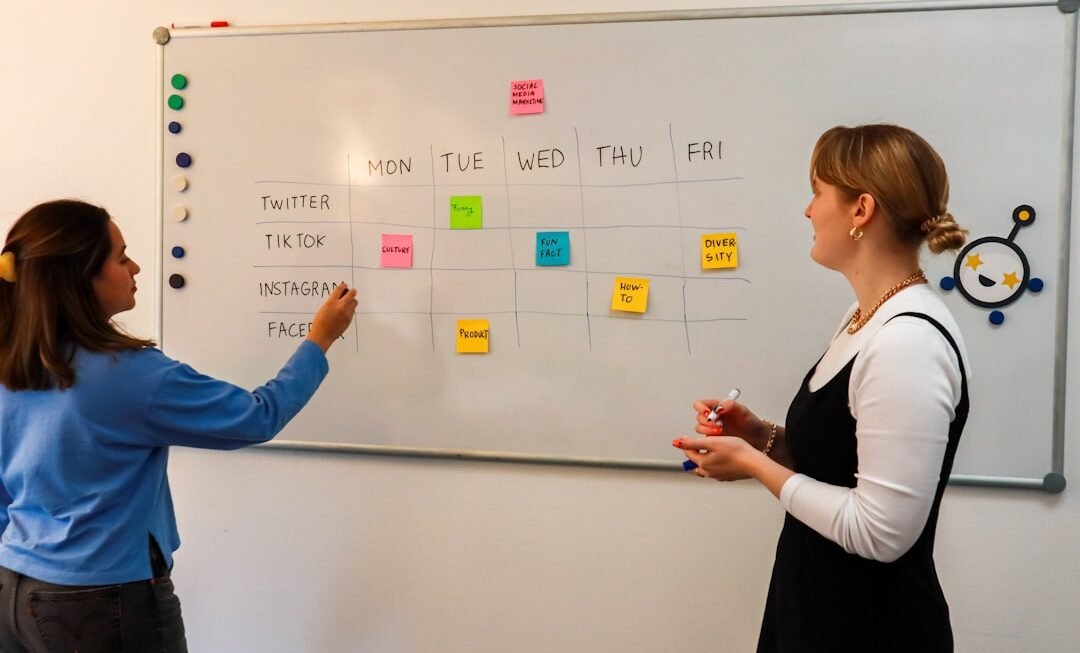The online learning revolution has fundamentally transformed the educational landscape, reshaping how knowledge is disseminated and acquired. With the advent of the internet and advancements in technology, traditional classroom settings have evolved into dynamic virtual environments that offer unprecedented access to information and learning opportunities. This shift has been accelerated by global events, such as the COVID-19 pandemic, which necessitated a rapid transition to online education.
As a result, educators, students, and institutions have had to adapt quickly to this new paradigm, embracing innovative teaching methods and digital tools. The implications of this revolution extend beyond mere convenience; they challenge long-standing educational norms and practices. Online learning has democratized education, allowing learners from diverse backgrounds and geographical locations to access high-quality resources and instruction.
This transformation has also prompted a reevaluation of pedagogical approaches, encouraging educators to rethink how they engage students and assess their learning outcomes. As we delve deeper into the various facets of this online learning revolution, it becomes clear that its impact is profound and far-reaching.
The Shift to Virtual Classrooms
The transition from physical classrooms to virtual ones has been one of the most significant changes in education in recent years. Virtual classrooms leverage technology to create interactive learning environments where students can participate in real-time discussions, collaborate on projects, and access a wealth of resources from anywhere in the world. Platforms such as Zoom, Microsoft Teams, and Google Classroom have become staples in educational institutions, facilitating synchronous and asynchronous learning experiences that cater to diverse learning styles.
This shift has also introduced new pedagogical strategies that enhance student engagement. For instance, educators can utilize breakout rooms for small group discussions, employ multimedia presentations to illustrate complex concepts, and integrate gamification elements to make learning more enjoyable. However, this transition is not without its challenges.
Teachers must navigate the intricacies of technology while ensuring that all students remain engaged and motivated. The need for effective communication and adaptability has never been more critical as educators strive to create inclusive and effective virtual learning environments.
Utilizing Learning Management Systems
Learning Management Systems (LMS) have emerged as essential tools in the online education landscape, providing a centralized platform for course management, content delivery, and student assessment. Systems like Canvas, Moodle, and Blackboard enable educators to organize course materials, track student progress, and facilitate communication between instructors and learners. These platforms streamline administrative tasks, allowing teachers to focus more on instruction and less on logistics.
Moreover, LMS platforms offer a range of features that enhance the online learning experience. For example, they often include discussion forums where students can engage in dialogue outside of live sessions, quizzes that provide immediate feedback on understanding, and analytics tools that help educators monitor student engagement and performance. By harnessing the capabilities of LMS, educators can create a more structured and supportive learning environment that fosters student success.
Adapting Curriculum for Online Delivery
Adapting curriculum for online delivery requires a thoughtful approach that considers the unique characteristics of virtual learning environments. Traditional curricula may not translate effectively to online formats without significant modifications. Educators must rethink their instructional strategies, focusing on creating engaging content that resonates with students in a digital context.
This may involve breaking down complex topics into smaller, digestible modules or incorporating multimedia elements such as videos, podcasts, and interactive simulations. Additionally, the assessment methods used in online education must align with the new delivery format. Traditional exams may not be suitable for online settings due to concerns about academic integrity and the need for flexibility in assessment timing.
Instead, educators are exploring alternative evaluation methods such as project-based assessments, peer reviews, and open-book quizzes that encourage critical thinking and application of knowledge rather than rote memorization. This shift not only enhances the relevance of assessments but also promotes deeper learning experiences for students.
Supporting Teachers in the Transition
As educators navigate the complexities of transitioning to online teaching, it is crucial to provide them with adequate support and professional development opportunities. Many teachers may feel overwhelmed by the rapid changes in technology and pedagogy required for effective online instruction. Institutions must invest in training programs that equip educators with the skills necessary to thrive in virtual environments.
This includes training on using various digital tools, understanding best practices for online pedagogy, and developing strategies for fostering student engagement. Peer collaboration also plays a vital role in supporting teachers during this transition. Creating communities of practice where educators can share experiences, resources, and challenges fosters a culture of continuous improvement.
By encouraging collaboration among teachers, schools can cultivate an environment where innovative teaching practices flourish, ultimately benefiting students’ learning experiences.
Providing Access to Technology and Resources
Access to technology is a critical factor in the success of online learning initiatives. Unfortunately, disparities in access can create significant barriers for students from low-income families or underserved communities. To ensure equitable access to education, schools and policymakers must prioritize providing necessary technology resources such as laptops, tablets, and reliable internet connectivity.
Initiatives like device loan programs or partnerships with local internet service providers can help bridge the digital divide. Furthermore, it is essential to consider not only access to devices but also the availability of high-quality educational resources. Online libraries, open educational resources (OER), and digital textbooks can enhance the learning experience by providing students with diverse materials that cater to different learning preferences.
By investing in technology infrastructure and resources, educational institutions can create an inclusive environment where all students have the opportunity to succeed in their online learning journeys.
Addressing Equity and Inclusion in Online Learning
Equity and inclusion are paramount considerations in the realm of online education. The shift to virtual learning has highlighted existing disparities among students regarding access to technology, support systems, and learning environments. To address these challenges effectively, educators must adopt inclusive practices that recognize and accommodate diverse learner needs.
This may involve differentiating instruction based on individual student strengths and weaknesses or providing additional support services such as tutoring or counseling. Moreover, fostering an inclusive online community requires intentional efforts to create a sense of belonging among all students. Educators can implement strategies such as culturally responsive teaching practices that reflect students’ backgrounds and experiences or encourage collaborative projects that promote teamwork among diverse groups.
By prioritizing equity and inclusion in online learning environments, educators can help ensure that every student has the opportunity to thrive academically and socially.
Assessing Student Progress and Engagement
Assessing student progress in an online learning environment presents unique challenges compared to traditional classroom settings. Educators must develop innovative assessment strategies that accurately measure student understanding while promoting engagement. Formative assessments—such as quizzes, polls, or reflective journals—can provide valuable insights into student comprehension throughout the learning process rather than relying solely on summative assessments at the end of a unit.
Additionally, leveraging technology can enhance assessment practices by providing real-time feedback and analytics on student performance. Tools like Google Forms or Kahoot!
By employing diverse assessment methods tailored to the online context, educators can foster a more comprehensive understanding of student progress while maintaining high levels of engagement.
Building a Sense of Community in Virtual Spaces
Creating a sense of community within virtual classrooms is essential for fostering student engagement and motivation. In traditional settings, social interactions naturally occur through face-to-face interactions; however, replicating this sense of belonging in an online environment requires intentional efforts from educators.
Moreover, utilizing discussion boards or group projects encourages collaboration among peers while allowing students to share their perspectives and experiences. By promoting open communication channels—whether through video conferencing or chat features—educators can cultivate an inclusive community where students feel valued and connected. Building this sense of community not only enhances the overall learning experience but also contributes positively to students’ emotional well-being during their educational journey.
Integrating Online Learning with Traditional Education
The integration of online learning with traditional education models presents an opportunity for hybrid approaches that leverage the strengths of both formats. Blended learning environments combine face-to-face instruction with online components, allowing for greater flexibility in how content is delivered and learned. This model enables educators to personalize instruction based on individual student needs while still providing opportunities for direct interaction.
For instance, teachers might use online platforms for delivering lectures or assigning readings while reserving classroom time for discussions or hands-on activities that reinforce concepts learned online. This approach not only maximizes instructional time but also allows students to engage with content at their own pace before applying their knowledge in collaborative settings. As educational institutions continue to explore hybrid models, it is essential to evaluate their effectiveness continually and make adjustments based on student feedback and performance data.
Looking Towards the Future of Online Education
As we look towards the future of online education, it is clear that this revolution is far from over; rather, it is evolving rapidly alongside technological advancements and changing societal needs. Innovations such as artificial intelligence (AI), virtual reality (VR), and augmented reality (AR) are poised to further enhance online learning experiences by providing immersive environments that engage learners in unprecedented ways. For example, VR can transport students into historical events or scientific phenomena, allowing them to explore concepts interactively.
Moreover, as educational institutions increasingly embrace lifelong learning models, online education will play a pivotal role in providing accessible opportunities for individuals seeking professional development or career transitions. The flexibility inherent in online formats allows learners of all ages to pursue education alongside work or personal commitments seamlessly. As we continue navigating this transformative landscape, it is essential for educators, policymakers, and stakeholders to collaborate in shaping an inclusive future where quality education is accessible to all learners—regardless of their circumstances or backgrounds.












